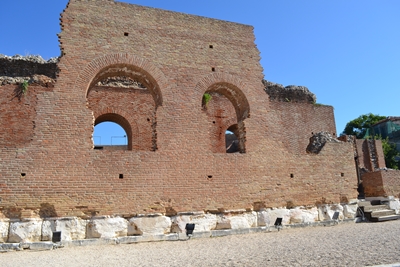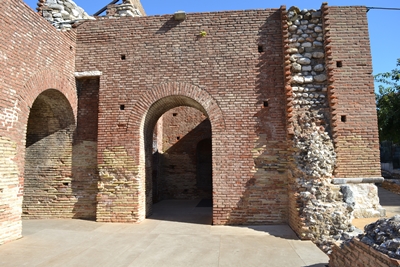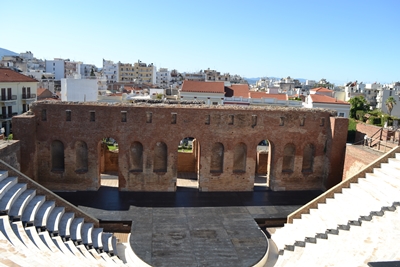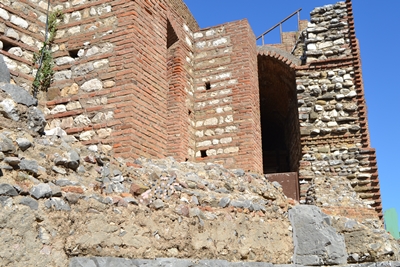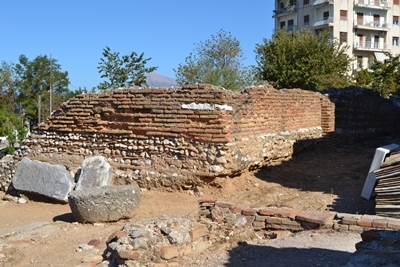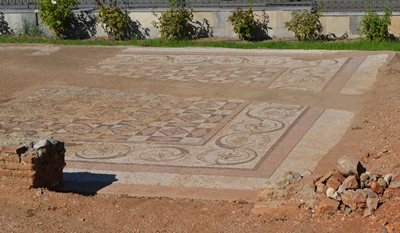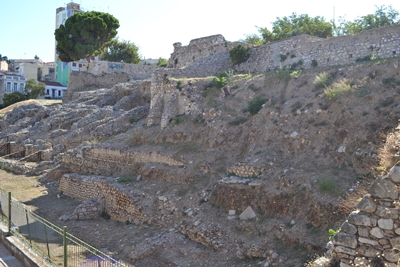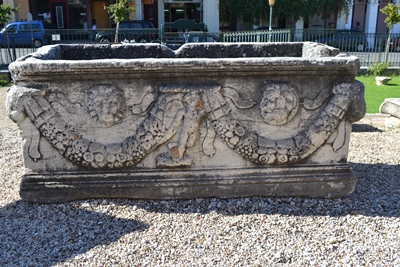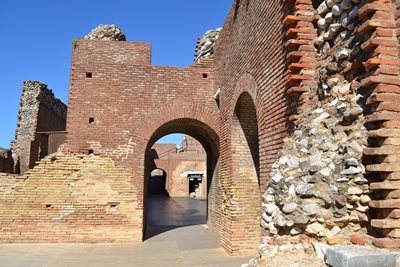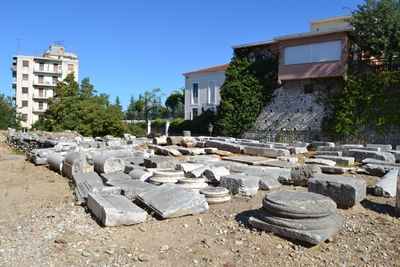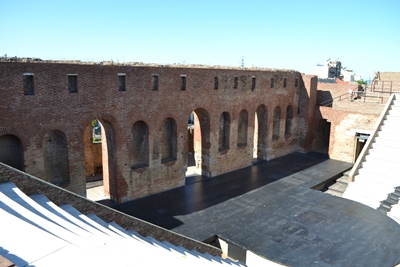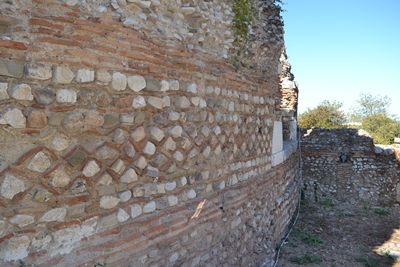ANCIENT ODEION OF PATRA
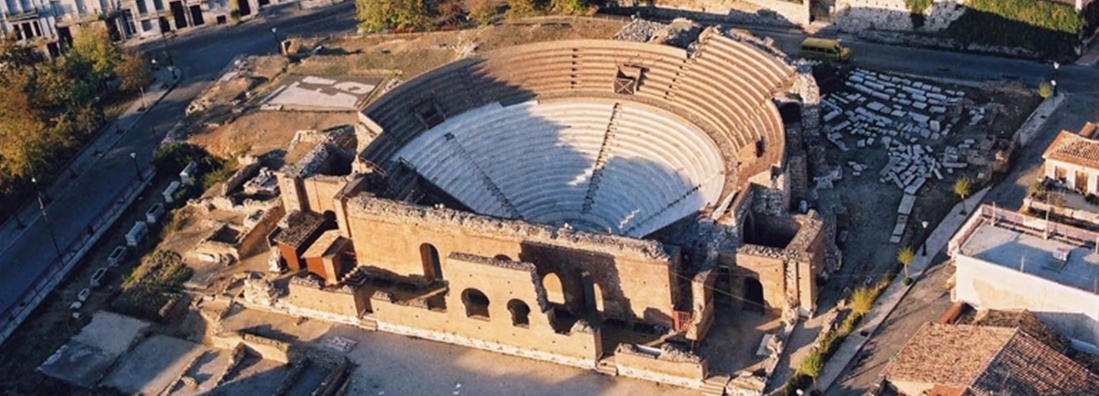
PLEASE NOTE THAT ALL THE PHOTOGRAPHS ON THE SITE ARE CLICKABLE LINKS
The ancient Odeion of Patras is mentioned by Pausanias as the finest Odeion in Greece, only surpassed in size and decoration by the Odeion of Herodes Atticus in Athens. It was built before 160 AD and went out of use after the 3rd century AD.
It comprises the usual cavea, orchestra, proskenion, scene and paraskenia and is smaller than the Herodeion. The cavea, with a diameter about half that of the Athenian Odeion had half of the latter's capacity (2,500 spectators in Patras, 5,000-6,000 in Athens).
The cavea was neither carved into the bedrock nor constructed on a natural slope, as was commonly the case in other theatres.
It was, rather, supported by a retaining wall, not fully preserved today, built of stone and faced with opus testaceum brickwork (i.e. continuous rows of bricks), reinforced at intervals with brick pillars. The same type of masonry was used in the facade wall as well as in the walls dividing the scene and paraskenia.
The south facing facade has five entrances to the scene and two more to the sides, leading to the paraskenia. The scene wall, facing the cavea, has eight niches, four of them arched and another four orthogonal. Similar niches were incorporated in the low proskenion wall facing the orchestra. The marble paved semicircular orchestra is separated from the cavea by a low wall.
The cavea has three built stairways leading from its upper end towards the gangway (diazoma), which divides the cavea in two. The lower part comprises four wedges with 16 tiers of seats. The upper part has seven wedges with seven surviving tiers of seats and an equal number of staircases. Additional tiers that have collapsed along the upper part of the retaining wall may have existed.
Researchers date its construction either during 1st century BC or 1st century AD. It is classified in the monuments of the roman period and was probably built under the orders of the Emperor August. The years of his domination were for the city of Patras an era of great growth, as he favoured its residents by declaring them "Free Citizens" .
The Odeion is built in the southern side of the hill of the acropolis of Patras, and it was the continuum of the ancient agora (marketplace). In the upper part of the monument was situated a statue of god Apollo, which was made of the loot of the participation of local inhabitants in the fight against the Gallic.
During the centuries the various conquerors, earthquakes and natural disasters have had a major impact on the monument. Because of that the monument had been covered with soil.
Between the 3rd c. AD and 1889, when the Odeion was discovered, the area was used in a number of different ways (among them as a cemetery).
In fact, its discovery was made when earth was needed for the construction of the city's harbor. After World War II it was restored by the local architect Ioannis Vassileiou, and the lower section paved with marble panels.
During the years 1938, 1943 and 1957 progressive excavations uncovered various parts of the Odeion. A number of decades were to go by before the beginning of reconstruction works, which were completed in 1965, the year during which the Odeiom regained its initial form.
The Odeion has a capacity of 2,200 persons and consists of two rows of seats of radial form. The scene consists of an ascended platform and behind that a space for the preparation of the actors. Nowadays, the Odeon is used for cultural events and mainly during the International Festival of Patras.
Inside the Odeion, which was contiguous to the ancient Agora, there was a statue of Apollo, which was constructed by the spoils of the war against the Gauls in 279 AD, when Patras had helped the Aitolians.
Monuments of the Roman occupation era, which are situated close to the historic centre of the city, form a unified archaeological site of major historical importance. These monuments are symbols of the development of Patras during the Roman occupation, as the city has been favored by Rome.
The Odeion, as well as the Stadium, were decorated with statues. Next to these two buildings, there were the temples of Aphrodite and Nemesis with marble statues, as well as the temple of Dionysos.
